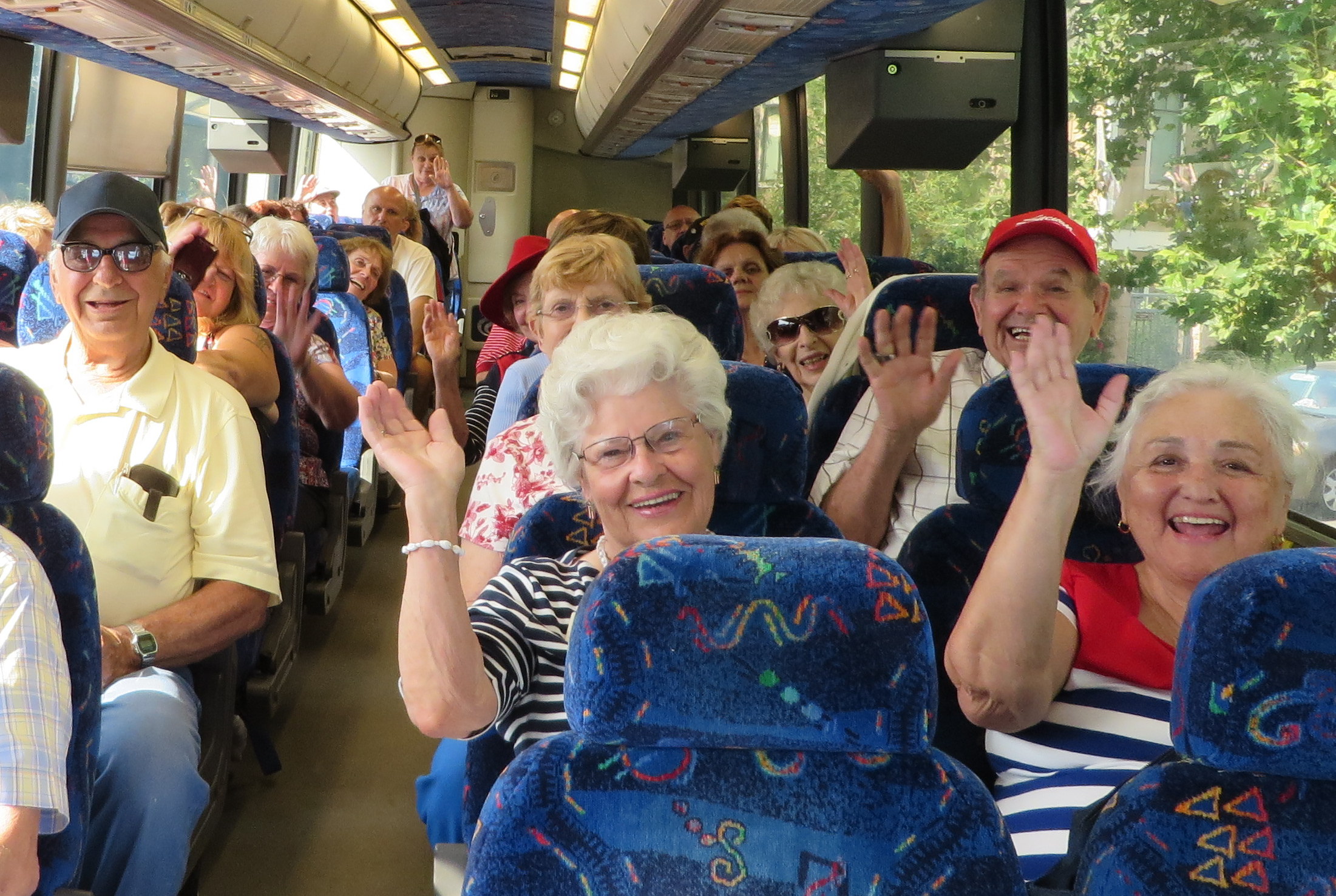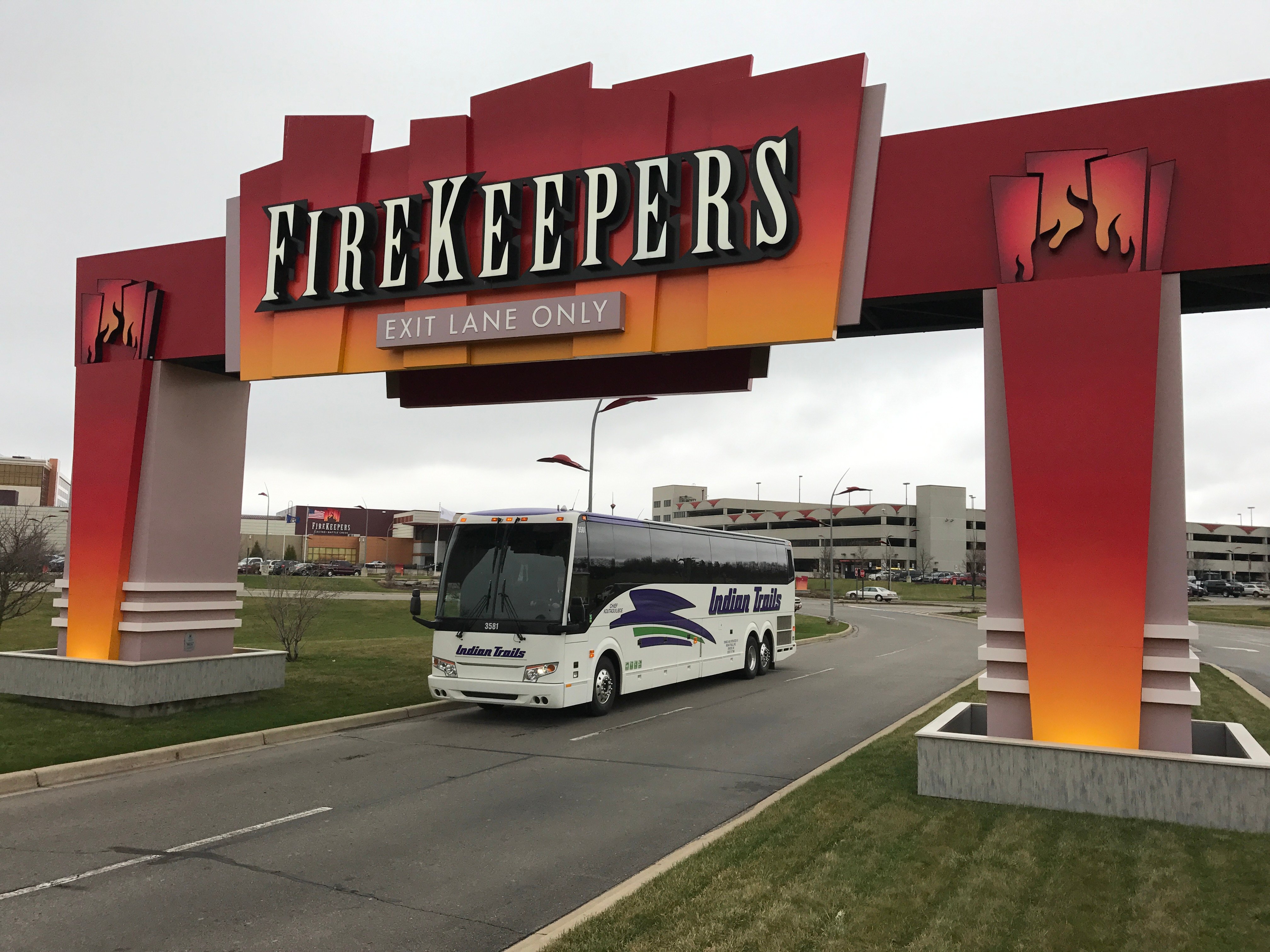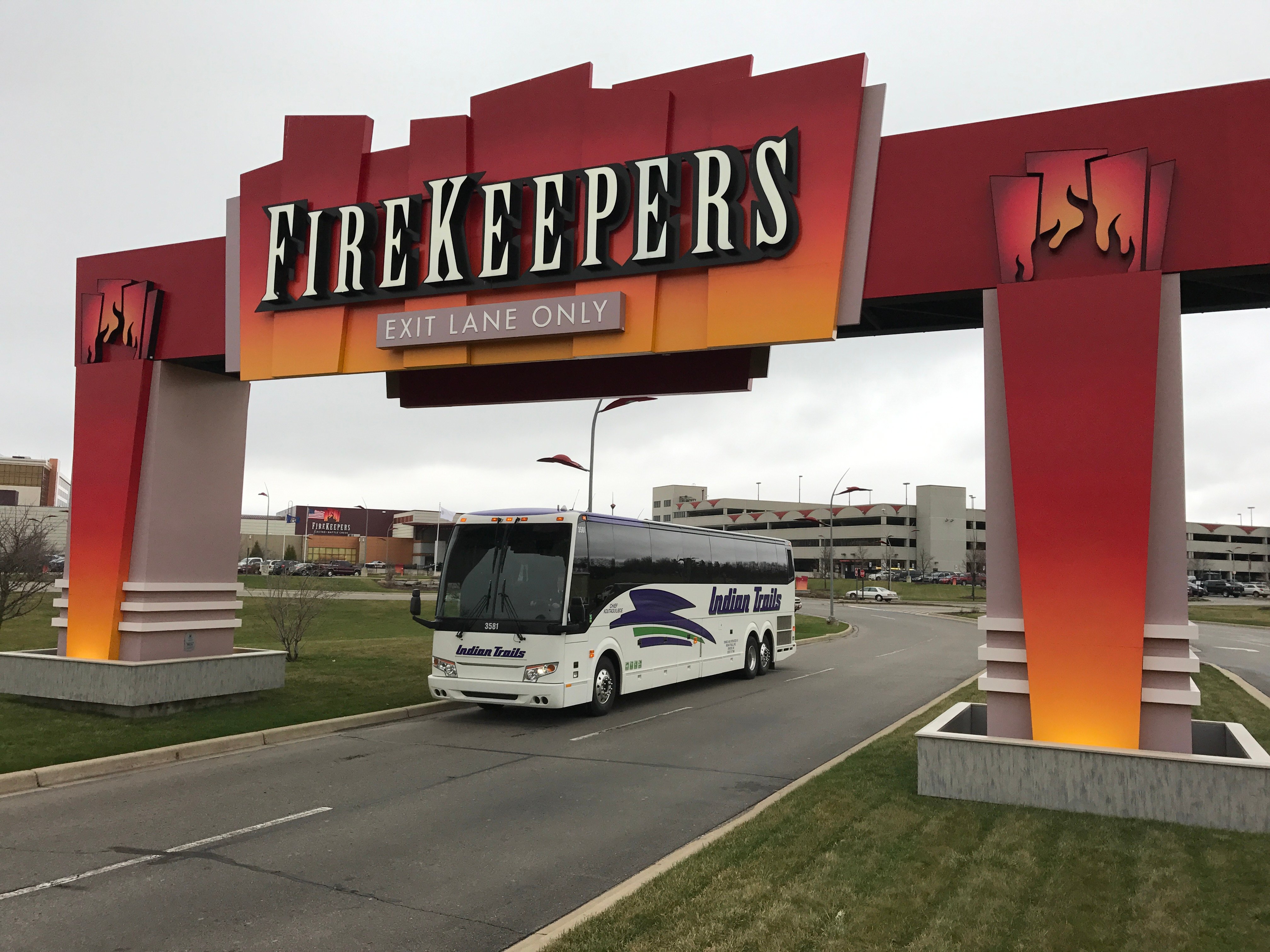Bus trips for seniors are gaining popularity, offering a convenient and affordable way for older adults to explore new destinations and enjoy social interaction. This comprehensive guide delves into the planning, marketing, and operational aspects of designing and running successful senior bus trips, addressing specific needs and preferences of this demographic.
From understanding the unique physical and cognitive considerations of senior travelers to crafting engaging itineraries and marketing strategies, we explore every facet of creating memorable and safe travel experiences. We examine popular destinations, addressing accessibility concerns and highlighting the importance of incorporating rest stops and flexible scheduling. The guide also covers crucial logistical aspects, including booking management, safety protocols, and emergency procedures, ensuring a smooth and worry-free journey for all participants.
Understanding Senior Travel Needs
Planning enjoyable and safe bus trips for senior citizens requires a nuanced understanding of their unique needs. Factors beyond simple transportation must be considered to ensure a positive travel experience that prioritizes comfort, safety, and accessibility. Ignoring these considerations can lead to discomfort, anxiety, and ultimately, a negative impact on the overall well-being of participants.Senior travel necessitates careful attention to both physical and cognitive capabilities.
Many seniors may have reduced mobility, limited stamina, or experience chronic health conditions that affect their ability to navigate unfamiliar environments or endure prolonged periods of sitting. Similarly, cognitive impairments, such as memory loss or decreased processing speed, can impact their ability to follow instructions or understand complex itineraries.
Accessibility Requirements for Buses and Destinations
Accessible transportation is paramount. Buses should be equipped with ramps or lifts for wheelchair users, designated seating areas with ample legroom, and easily accessible restrooms. Handrails should be strategically placed throughout the bus for stability. Destinations must also be accessible, with ramps, elevators, and wide doorways to accommodate wheelchairs and walkers. Signage should be clear, large, and easy to read.
For example, the Smithsonian National Air and Space Museum in Washington D.C. is a well-known example of a destination with excellent accessibility features, including wheelchair rentals and audio tours. This contrasts sharply with older buildings that lack such accommodations.
The Importance of Rest Stops and Flexible Itineraries
Incorporating frequent rest stops into the itinerary is crucial for senior travelers. These stops allow seniors to stretch their legs, use restrooms, and alleviate any discomfort associated with prolonged sitting. The frequency and duration of these stops should be carefully considered based on the length of the trip and the average fitness level of the participants. Furthermore, a flexible itinerary allows for adjustments based on unforeseen circumstances or the needs of individual participants.
Unexpected delays or changes in weather conditions can be easily accommodated with a flexible schedule. For instance, a planned visit to a park could be replaced with a visit to a nearby museum if inclement weather occurs.
Sample One-Day Bus Trip Itinerary
This sample itinerary prioritizes senior comfort and safety:| Time | Activity | Location | Notes ||—————|——————————————-|———————————————|—————————————————————————–|| 9:00 AM | Departure | Designated Pick-up Locations | Ensure all passengers are comfortably seated and briefed on the itinerary.
|| 10:30 AM | Rest Stop | Convenient Rest Area with Accessible Facilities | Allow ample time for restroom breaks and stretching.
|| 11:30 AM | Visit to Botanical Garden | Locally Accessible Botanical Garden | Choose a location with paved pathways and ample seating.
|| 1:00 PM | Lunch at Restaurant with Accessible Seating | Restaurant with Accessible Facilities | Pre-arrange the reservation and confirm accessible seating arrangements. || 2:30 PM | Visit to Local Museum | Museum with Accessible Features | Ensure the museum offers wheelchair access and assistive listening devices.
|| 4:00 PM | Rest Stop | Convenient Rest Area with Accessible Facilities | Another opportunity for rest and relaxation.
Do not overlook the opportunity to discover more about the subject of airline discounts for seniors.
|| 5:00 PM | Return Journey | Return to Designated Drop-off Locations | Ensure passengers are safely disembarked.
|
Marketing and Promotion Strategies: Bus Trips For Seniors

Reaching the senior demographic for bus trips requires a targeted approach that leverages channels and messaging resonating with their preferences and lifestyles. Effective marketing necessitates understanding their needs and communicating the value proposition clearly and concisely.Effective marketing strategies must consider the unique characteristics of the senior travel market. This includes understanding their preferred communication methods, their concerns regarding accessibility and comfort, and their desire for value and security.
A multi-channel approach is key to maximizing reach and impact.
Effective Marketing Channels for Senior Bus Trips
Three highly effective marketing channels for reaching seniors interested in bus trips include targeted print advertising, community engagement, and senior-specific online platforms. Print advertising in publications frequented by seniors, such as retirement community newsletters or senior-focused magazines, provides a tangible and easily digestible format. Community engagement through partnerships with senior centers and retirement communities allows for direct outreach and relationship building.
Finally, online platforms specifically designed for seniors or those offering senior-focused content can provide a digital presence tailored to the demographic.
Examples of Compelling Marketing Materials
Brochures should feature large, high-quality photographs showcasing comfortable seating, scenic destinations, and friendly tour guides. Text should be large and easy to read, using clear and concise language. For example, a brochure might feature a picture of seniors enjoying a scenic overlook with the headline “Relax and Explore: Worry-Free Travel for Seniors.” Website content should mirror this approach, with easy navigation, large fonts, and clear descriptions of itineraries, pricing, and accessibility features.
For instance, a website could include detailed descriptions of accessible restrooms and boarding assistance.
Advantages and Disadvantages of Social Media Marketing
Social media presents both opportunities and challenges for marketing senior bus trips. Advantages include cost-effectiveness, targeted advertising options, and the ability to engage directly with potential customers. However, seniors may have lower social media adoption rates than younger demographics, requiring careful consideration of platform selection and content strategy. Furthermore, the constant stream of information on social media can lead to message fatigue, requiring carefully curated and concise posts.
Key Features to Highlight in Marketing Materials
The following features should be prominently highlighted in all marketing materials to resonate with senior travelers:
- Comfortable, spacious seating with ample legroom.
- Experienced and courteous drivers and tour guides.
- Clearly defined itineraries with detailed descriptions of destinations and activities.
- Accessible features such as restrooms, ramps, and assistance with boarding.
- Competitive pricing with transparent fee structures.
- Comprehensive travel insurance options.
- Emphasis on safety and security measures.
- Opportunities for socialization and interaction with fellow travelers.
Addressing Senior Concerns and Preferences
Planning successful bus trips for seniors requires a deep understanding of their unique needs and preferences. Addressing potential anxieties and catering to diverse interests are crucial for ensuring a positive and memorable travel experience. This involves proactive communication, thoughtful trip design, and a commitment to creating a welcoming and inclusive atmosphere.
Common Senior Concerns and Solutions, Bus trips for seniors
Many seniors harbor concerns about physical comfort and safety during bus travel. Fear of falls, discomfort from prolonged sitting, and accessibility issues are common anxieties. To alleviate these concerns, tour operators should prioritize selecting buses with ample legroom, comfortable seating, and accessible features like ramps and wheelchair lifts. Regular restroom breaks should be incorporated into the itinerary, and clear communication regarding the bus’s features and safety protocols should be provided well in advance.
Furthermore, clear and readily available emergency contact information should be provided. For example, a detailed itinerary including stop locations, timings, and emergency contact numbers could be included in a pre-trip information packet.
Catering to Diverse Interests and Preferences
Senior travelers represent a diverse group with varied interests and preferences. Some may prefer historical sites and museums, while others might be drawn to scenic landscapes or relaxing beach getaways. To cater to these diverse tastes, tour operators should offer a variety of itineraries, focusing on different themes and destinations. For instance, one tour could focus on historical landmarks, while another might prioritize leisurely sightseeing and relaxation.
Pre-trip questionnaires can be used to gauge participants’ preferences and tailor the itinerary accordingly. Offering choices, such as optional activities or excursions, allows for greater personalization and ensures everyone feels engaged and satisfied.
Benefits of Interactive Activities and Social Events
Incorporating interactive activities and social events significantly enhances the senior travel experience. These activities foster camaraderie, combat loneliness, and provide opportunities for engagement and mental stimulation. For example, a trivia game about the destination or a group craft session can encourage interaction and create a sense of community. Planned social events, such as a welcome dinner or a farewell gathering, further facilitate bonding and create lasting memories.
These social interactions are particularly valuable for seniors traveling solo, providing opportunities to meet new people and make connections. The benefits extend beyond mere entertainment, enhancing the overall sense of well-being and creating a more enriching experience.
Frequently Asked Questions and Answers
Addressing frequently asked questions proactively demonstrates transparency and builds trust. A comprehensive FAQ section can significantly reduce anxiety and increase confidence in the tour operator.
- Question: What happens if I need medical assistance during the trip? Answer: We have a comprehensive emergency plan in place. This includes providing emergency contact information and working with local medical facilities to ensure prompt care. Travel insurance is strongly recommended.
- Question: Are there restroom breaks during the journey? Answer: Yes, we schedule regular restroom breaks at convenient locations throughout the trip, typically every 2-3 hours.
- Question: What is the luggage allowance? Answer: Each passenger is allowed one standard-sized suitcase and a carry-on bag. Specific weight and size limits will be provided in the pre-trip information packet.
- Question: What if I have mobility issues? Answer: We strive to accommodate passengers with mobility challenges. Please inform us of your specific needs during booking, so we can make appropriate arrangements. We use buses with accessible features, and can provide assistance as needed.
- Question: What type of activities are included in the trip? Answer: The itinerary includes a variety of activities tailored to the interests of senior travelers, such as sightseeing tours, cultural visits, and opportunities for relaxation. A detailed itinerary will be provided before the trip.
Successfully organizing bus trips for seniors requires careful consideration of numerous factors, from accessibility and itinerary design to marketing and emergency preparedness. By addressing the specific needs and preferences of older adults, tour operators can create enriching and enjoyable experiences that promote both physical and social well-being. The focus should remain on providing a safe, comfortable, and engaging journey, allowing seniors to create lasting memories while exploring new horizons.



:max_bytes(150000):strip_icc()/royal-caribbean-bahamas-CRUISENY1121-d802d4e4f53247ec86cc325bae6202b9.jpg)
